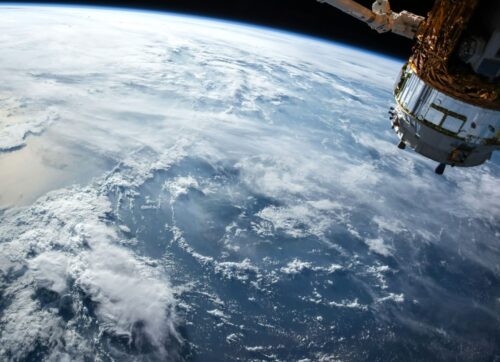We hear it over and again: the melting ice in Greenland due to warming will soon lead to a collapse of the AMOC, making it difficult for it to “restart”. [emphasis, links added]
The salt content in the north is critical because the salt-rich tropical water cools down and sinks due to the higher salt content, which is the “pump” that makes circulation possible in the first place.
It also transports very large amounts of heat into the North Atlantic.
Scenarios have been published that calculate a drastic cooling of the greater area (especially Europe) around it if the AMOC is “switched off”, e.g., “The Day After Tomorrow” scenario.
A more recent summary of these “tipping point” assumptions comes from Prof. Rahmstorf. It refers to reconstructed phases of such collapses, especially during “Heinrich Events” in the last Ice Age.
At that time, large quantities of icebergs advanced far to the south, where they melted and thus probably brought the AMOC to a standstill through sweetening.
New paper finds no alarm
A completely new paper sheds light on these events in detail and reconstructs the freshwater inputs very precisely. A very detailed discussion can be found here.
It finds a decisive difference in the situation during the last Ice Age and the present: whereas at that time the ice entered the Atlantic primarily in the form of icebergs from the large continental ice sheets, in the present it is Greenland – the island supplies the lion’s share of the freshwater.
This has consequences: as the glaciers continue to melt and retreat further inland, fewer and fewer icebergs are released and more and more liquid water is released.
This has a major impact on the AMOC. Icebergs are much more “effective”. They briefly freeze the surrounding surface seawater, which leads to the warming of the water below, as ice insulates against temperature loss to the (cold) atmosphere.

Due to the large mass of the icebergs, they also travel much further south before they melt and finally disappear, leading to much larger-scale sweetening.
The paper concludes that the iceberg discharges from Greenland will not last long enough to drive the AMOC into collapse.
Another reason for this is that it was much weaker in ice ages than at present anyway. The lead author of the study is quoted as saying:
This is good climate news that will hopefully dissuade people from climate doomism.”
So whoever reads something about the “soon to dry up North Atlantic Current” and the catastrophic effects in the future: The current piece in “Science” files this under doomsday fantasies (“doomism”).
Translated by Pierre Gosselin
Read more at No Trick Zone




















So the Greenland ice is going to melt. Where is the heat to melt that ice coming from? It has to come in via moving air. Air doesn’t carry much ‘heat’ so it’s going to take a while. One figure I’ve seen is 3,400 years.
Sound the disaster alarm. Panic, panic, panic…..